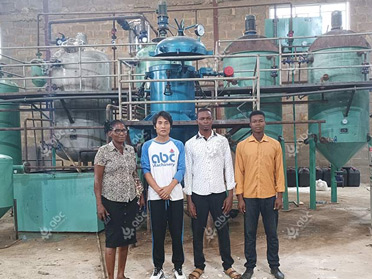As a reputed grain processing machinery manufacturer and supplier, we can offer all kinds grain processing machinery including wheat cleaning equipment which can be used for cleaning various types of grains and beans including wheat seeds. With the help of high class material and modern techniques, our grain cleaning equipments are appreciated for their premium quality, easy operation and reasonable price.

Small Scale Grain Cleaning & Hulling Plant

Small Wheat Cleaning Plant for Mini Flour Milling Plant
Common Wheat Cleaning Equipment for Sale
The wheat cleaning equipment are designed accordingly so as to determine the physical properties and the following methods are used to remove different types of the impurities.
 |
||
| Air-Screen Cleaner | Grader / Screener | Specific Gravity Separator |
Air-Screen Cleaner
It is the basic machine in the wheat cleaning plant. It removes the impurities on the basis of three physical properties- size, shape, and density. The typical air-screen cleaner consist of a four-screen machine located beneath a seed hopper, it is widely found in a farm seed-cleaning plant.
Grader
A grader is a machine that sorts the impurities on the basis of the width and thickness. It comprises of cylindrical screens or 'shells" that are mounted horizontally and have round perforations. The wheat that needs to be cleaned is put into the one end of the rotating shell where it tumbles and migrates toward the tail end. The sorted clean wheat falls on the conveyor.
lndent Disk Separator
Wheat that is processed under this grader is further sorted on the basis of length differences. This separator uses the principle of separating the short seeds out of the given mass of seeds. It is specially accommodated to differentiate long wheat grains out of the mixture.
Specific Gravity Separator
The specific Gravity Separator differentiates the material according to density or relative gravity. These machines are widely adopted by the crop industry to separate contamination from the crops. With the help of these technology particles of the same size and density can be easily separated. Hence, the cleaning processes vary with the requirements of the wheat quality and size. Apart from the above 4 major wheat cleaning equipment, there are various other technologies which are widely used for the separating contaminants from the wheat processing production. If you are planning to buy a grain seeds cleaning equipment unit or interested in building a complete large scale wheat cleaning plant, feel free contact us for more details!
Market of Wheat Cleaning Industry
Agricultural production in the US accounts for 70% to 80% of the wheat consumed in and out of the country. Being the center of agricultural production in the country, wheat is produced almost in every state. There are varied methods are used in cleaning wheat and processing it for further usage. It is estimated that nearly 50% of wheat production is exported while 36% is consumed in domestic.

However, before exporting and using wheat for domestic purposes it should be cleaned and processed. There are various types of cleaning processes which are used to clean the seeds and the processes majorly take place in a wheat cleaning equipment unit. There are certain sets of impurities that are generally found in the harvested wheat. This set consists of the following impurities:
- Metal
- Foreign materials(Debris)
- Grains other than wheat
- Weeds
- Stones
- Diseased- Scab
- Insect damaged seeds
- Ergot
- Heat damaged seeds
- Black Tip
- Shrunken
Everything listed above can be removed from the wheat by use of wheat cleaning machinery. There are specific methods which are widely used for removing the physical impurities and cleaning the seeds. Wheat cleaning is no more a long and time-consuming process; everything is done using the latest grain processing machines and technology.
Further seeds are cleaned on the basis of the physical properties of the impurities. These physical properties are considered as the standard for removing impurities. It can be considered that Impurities are differentiated on the basis of physical differences, magnetic properties, flow in the air properties, size and shape, friability, density, and surface characteristics.

 Build Your Future!
Build Your Future!








